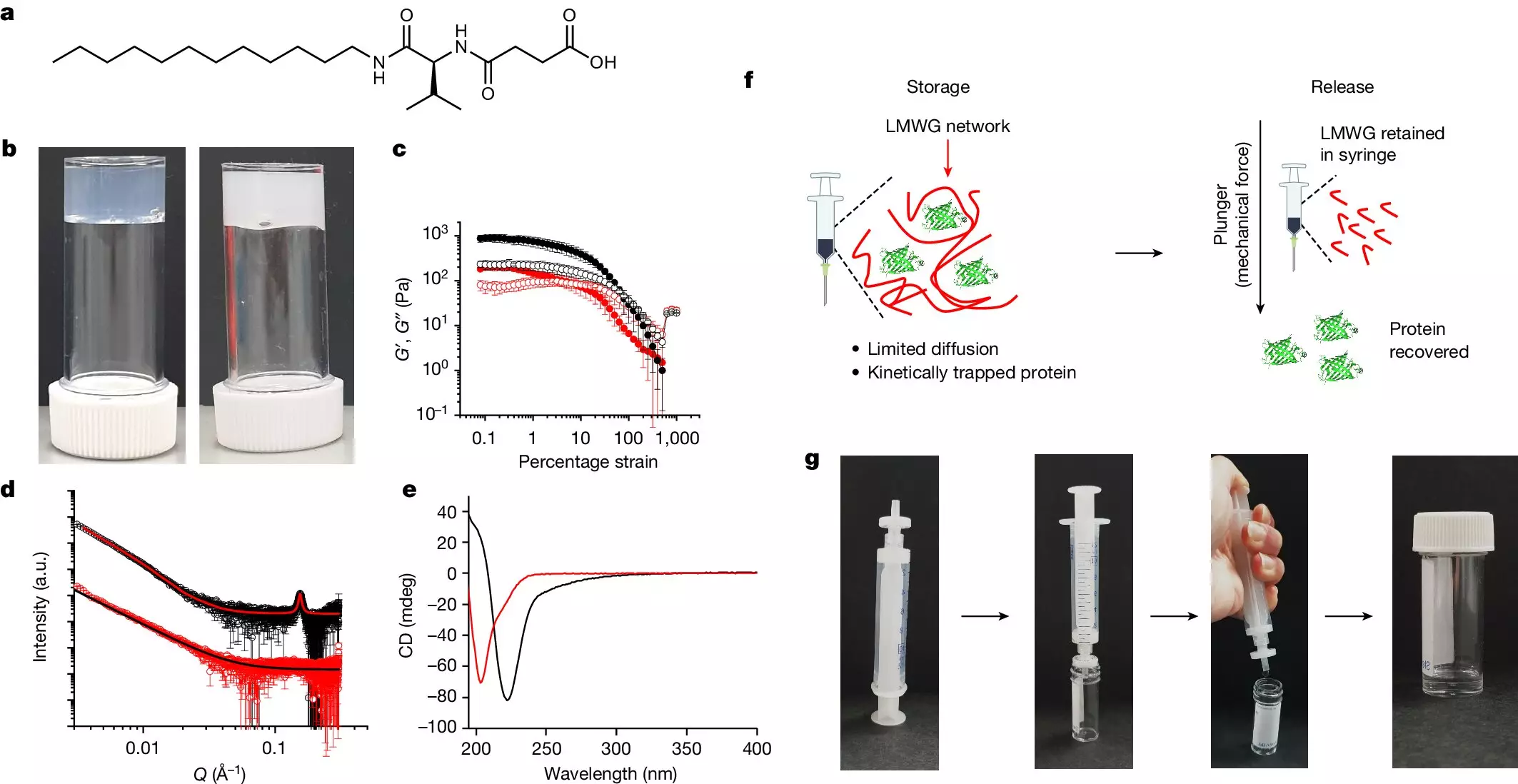In a remarkable advancement that could transform the landscape of medical treatments, scientists have unveiled a revolutionary approach to storing and distributing protein therapeutics devoid of traditional refrigeration requirements. This significant innovation, detailed in a recent publication in the esteemed journal *Nature*, stands to enhance access to vital protein-based drugs—particularly in developing nations where cold storage infrastructures are often insufficient or non-existent. The implications are profound, promising to elevate the standard of care for patients afflicted with serious health issues in underserved regions.
The Hydrogel Breakthrough Explained
Researchers from the Universities of Manchester, Glasgow, and Warwick have engineered a hydrogel—a polymer primarily composed of water—that dramatically stabilizes essential proteins. This hydrogel is capable of maintaining the structural integrity and operational functionality of these proteins at temperatures soaring up to 50°C. The most intriguing aspect of this technology is its ability to withstand the rigors of transportation through postal services without compromising the efficacy of the proteins enclosed within. This shift towards more accessible, cost-effective, and energy-efficient methods of supplying essential treatments is poised to make a significant impact on global health.
Protein therapeutics, which are critical in managing a spectrum of conditions from cancer to diabetes, have traditionally faced challenges associated with their stability during storage and transport. The previous reliance on cold chains—complex systems that maintain continuous refrigeration—has not only been energy-intensive but has also restricted equitable access, particularly in low-resource settings where such infrastructures are rare.
Addressing the Challenges of Cold Chain Storage
“The early days of the COVID-19 vaccine rollout highlighted the obstacles posed by traditional cold chain logistics,” remarked Dave Adams, a professor at the University of Glasgow’s School of Chemistry and a prominent author of the study. His insights underscore the urgent need for innovations like the hydrogel technology, which promises to dismantle these logistical barriers and democratize access to life-saving therapies. The ability to create robust delivery systems with reduced temperature management requirements signifies a potential paradigm shift in how protein therapeutics are administered globally.
The hydrogel system employs low molecular weight gelators (LMWGs) to form a three-dimensional network of stiff fibers. Within this microscopic architecture, proteins are effectively ensnared, preventing them from aggregating or losing their functional properties—an issue that has long plagued the storage of these essential medications. The mechanical characteristics of the hydrogel ensure that when delivery is required, the proteins can be smoothly extracted without damage, maintaining their therapeutic integrity.
Remarkable Efficacy Under Strain
The innovation has already demonstrated impressive results with critical proteins like insulin and beta-galactosidase. Traditionally, insulin’s viability is compromised by heat or agitation, necessitating strict control over temperature and handling. However, experiments show that samples preserved in this hydrogel can withstand rigorous processing, such as exposure to high temperatures and mechanical stress, without losing efficacy. This resilience makes the hydrogel an attractive option for situations where conventional storage methods may falter.
In one particularly telling trial, beta-galactosidase was subjected to a prolonged heat challenge of 50°C over seven days. The results were striking: a staggering 97% of its enzymatic activity was preserved, demonstrating the hydrogel’s remarkable protective qualities. Furthermore, tests simulating postal transit confirmed that the hydrogel not only maintained structural integrity during shipping but also effectively prevented protein aggregation throughout the journey.
A Paradigm Shift in Biotechnology
Matthew Gibson, a professor at the University of Manchester and co-author of the study, articulates the uncharted possibilities this technology presents for biopharmaceuticals and diagnostics. The capability to eliminate the reliance on additives in storage opens up new avenues for innovation, enhancing the viability of protein therapeutics like never before. The ability to store and transport proteins at ambient temperatures—removing the complexities surrounding the interaction between gel components and the proteins themselves—represents an extraordinary leap forward in biotechnological applications.
The research team is now exploring commercial prospects for their patent-pending hydrogel technology, eager to translate this scientific advancement into a practical, life-saving solution for the healthcare sector. They expect the reach of this innovation to extend far beyond managing existing medications, potentially influencing the development of new protein therapies and even revolutionizing vaccine dissemination.
While the challenges of distributing protein therapeutics have historically posed barriers to global healthcare accessibility, the advent of this hydrogel offers a hopeful future. Its transformative potential could enable a significant paradigm shift in how medical treatments are stored, transported, and administered, making a profound impact on the health outcomes of countless individuals worldwide.

